Pex Lives 29: The Tribe of Gum/The Face of Evil
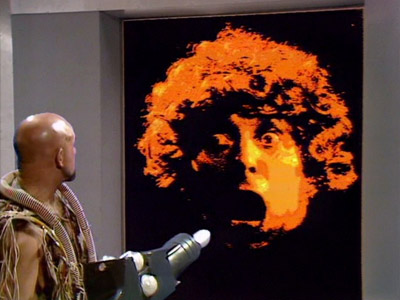 Kevin. James. Daniel Harper. Za. Orb. Xoanon. Brilliance.
Kevin. James. Daniel Harper. Za. Orb. Xoanon. Brilliance.
No, I’m not drunk-queuing posts, why do you ask?…
 Kevin. James. Daniel Harper. Za. Orb. Xoanon. Brilliance.
Kevin. James. Daniel Harper. Za. Orb. Xoanon. Brilliance.
No, I’m not drunk-queuing posts, why do you ask?…
 Or ‘American History X-Wing’
Or ‘American History X-Wing’
Yes, it’s the third and concluding episode in my trilogy of posts about Star Wars. I’m going to be making all sorts of generalisations about ‘America’ in this post. Please bear in mind, I don’t mean them to apply to all American people. Far from it. I’m talking about mainstream historical narratives, and the culture industries, and ideology, and so on. Also, in keeping with tradition, I’ve included an unnecessary and irritating (but also rather cute, if you’re honest) teddy bear. Oh, and in twenty years time I’ll come back and reissue these posts with crappy extra passages edited in for no good reason.
Three political categories dominate the Star Wars galaxy: Republic, Empire, and Rebellion. This is the arrangement in The Force Awakens just as much as in the original trilogy. Indeed, it is the apparent impossibility of telling a Star Wars story in which the galaxy is arranged any other way which determines the inevitability that The Force Awakens will be, and has to be, a ‘structre’ (as covered in previous episodes).
Galactic politics is in a constant state of fluctuation, but the fluctuation is between these three poles. Republic breeds Empire, Empire attacks Republic, Rebellion destroys Empire and restores Republic. And then the whole thing begins all over again. It unfolds with the inevitability of a Hegelian triad (but that joke isn’t funny anymore, so we’ll leave that there).
The three modes correspond to the way in which America conceives of its history and its future. America sees itself as always in a state of being one or the other, becoming one or the other, splitting away from one or the other, redeeming one or the other, fighting one or the other, falling from being one or the other into being one or the other. Left and Right agree on this, though they inflect it differently (natch).
Tied to this is the perennial idea of America ‘losing its innocence’ whereas, as James Ellroy put it: “We popped our cherry on the boat over and looked back with no regrets. You can’t ascribe our fall from grace to any single event or set of circumstances. You can’t lose what you lacked at conception.” Interestingly, he still seems to think that a ‘fall from grace’ did happen.
Hollywood has been playing with these three categories for some time actually. What are the great Hollywood Biblical epics but negotiations of the political and moral valences of republics that become empires, and rebellions against empires. In Ben Hur, Spartacus, Quo Vadis, The Robe, Cleopatra, etc, there is Rome as the great republic-turned-empire, dominating the world; and there are the Christians and/or slaves bravely defying her. The Ten Commandments does something similar with Egypt and the Hebrews. Star Wars reiterates these old Hollywood testaments in many ways, most especially the prequels with the slaves of Tatooine (slavery exists in pockets alongside the benevolent Republic… notice and store for later use), and in the religiose choral moments in the score of Return of the Jedi.…
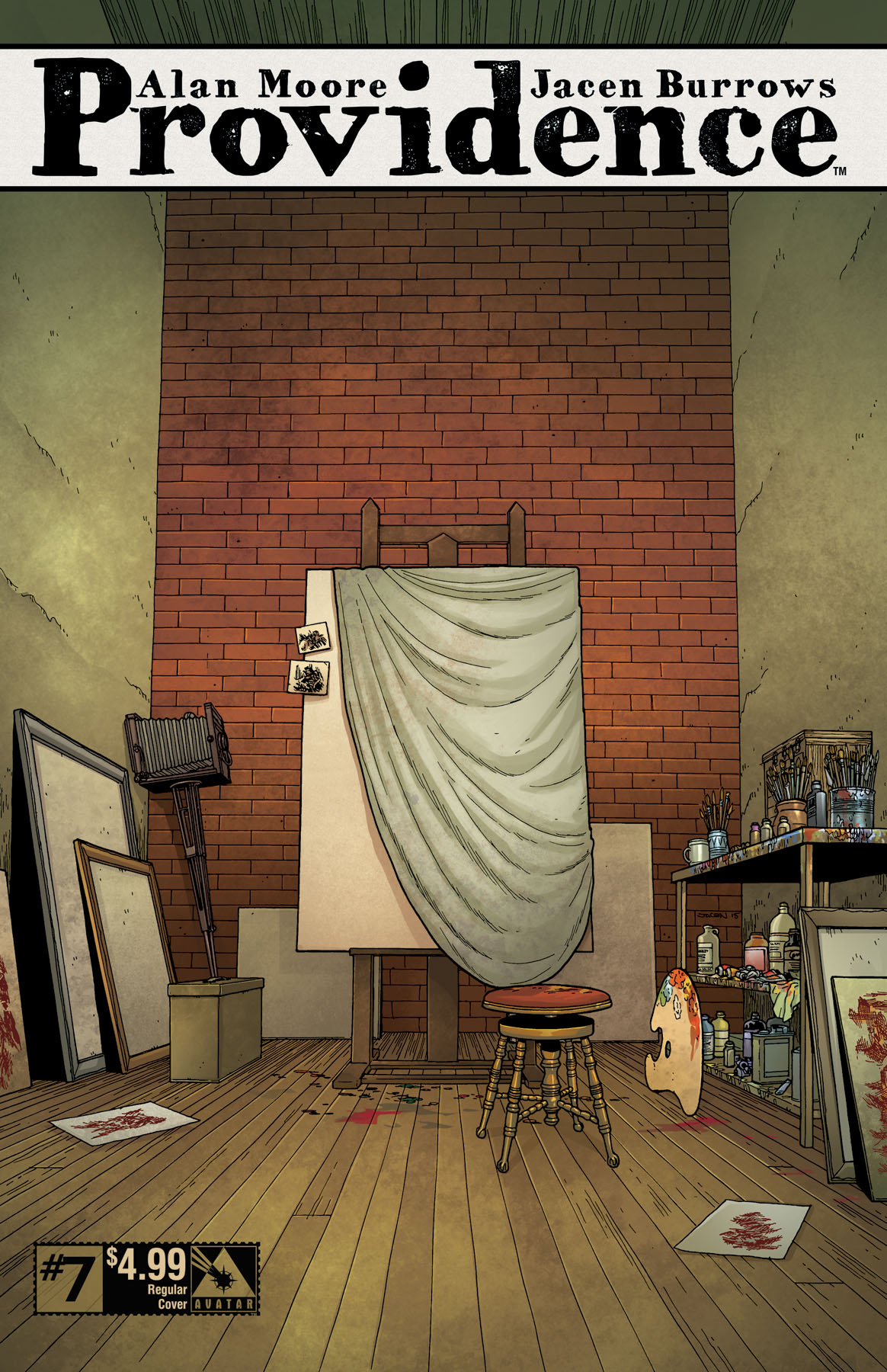 Mercurty Heat #7
Mercurty Heat #7
A really strong issue that continues the momentum from the end of the first arc, is genuinely funny at several points, and has a thoroughly fascinating cliffhanger, not just for the double-page spread/reveal (which is a great hook) but the issue’s final line, which takes the reveal and puts it in a new light that’s full fo questions, all of them good ones. Really quite excited for this arc. So why is it at the bottom of the list? Because of that fucking awful pun on the issue-ending title page, of course.
Batgirl #48
As with many Marvel books in 2015, this is suddenly much harder to enjoy knowing that Rebirth is coming to reboot or relaunch or whatever this title, presumably with something that isn’t the Fletcher/Stewart/Tarr team or, for that matter, the attractive $2.99 price point. Anyway, it hangs over this perfectly adequate issue like an unpleasant cloud. Liked the end twist here, but this was oddly structured, and it’s tough to get invested in the current arc, not least because the book itself is forced to admit repeatedly how much of a retread of an earlier one it is.
Incinvible Iron Man #6
Mike Deodato joins temporarily for his usual habit of double page spreads that in no way indicate that you should be reading across two pages. Seriously, any artist who does a two-page spread that does not have any panels crossing the middle should be slapped. Deodato also brings his expressionless faces and his comically “moody” shadows, while Bendis brings a slow-moving but in no way unenjoyable script that mostly serves as a recap of the first five issues. I admit, I’m eyeing Civil War II as a great jumping off point right now.
Digital code: FCM6VBCCYLS4
Spider-Man #1
Perfectly adequate and standard Bendis-Spidey, which feels slightly shy of good enough for the third #1 that Miles has gotten and yet another new status quo that doesn’t actually feel particularly different from any of the old ones despite being in the not-the-616-anymore Marvel Universe. Still, it’s an issue #1 and pretty good, so someone should probably snag the digital code on it.
Digital code: FCMV6CHUQ49D
Klaus #3
The surprise of this has largely faded since its sublime first issue, and at this point I admit I have no idea how Morrison thinks there’s four more issues of this to do. Still, this has several “bring a smile to your face” moments and remains a fun premise. Hoping it manages to keep the momentum up to remain one of Morrison’s best titles in years, but as I admit, I’d be a lot more excited about this at a four-issue mini than the projected seven.
A-Force #2
My fears about this going to a co-author again appear unfounded, which I shouldn’t be surprised by given that Kelly Thompson has long been one of the very intelligent people of comics fandom. Numerous laugh moments, and a real meatiness to the issue that feels well longer than its twenty pages.…
“The Homecoming” opens on one of the more triumphant notes Star Trek: The Next Generation/Star Trek: Deep Space Nine has done in recent memory. There’s a slow pan across the new set for the Promenade upper level into Quark’s, where the man himself in engaged in one of his classic verbal sparring matches with Odo. The energy carries through to the scene where Quark visits a brooding Kira in her quarters to deliver Li Nalas’ earring. Finally, we get a jovial and upbeat Ben Sisko having a charismatic father/son moment with Jake, followed by a friendly and breezy lunch date with Kira. Well, up until she springs the news she wants to take a Runabout to Cardassia 4 to spring a jailbreak.
The sense we get is of a show that’s on top of the world, elated by its recent success. Star Trek: Deep Space Nine is *back*, refreshed and energized to continue the creative high it came off the previous season on. And it has every reason to be comfortable and pleased with itself: Late 1993 into early 1994 was the critical, creative and commercial high point for Star Trek as a franchise, and it’s on Deep Space 9 that this is manifesting the most visibly and effortlessly. This must have been around the time I started taking serious notice of the show too, because it’s “The Homecoming”/“The Circle”/“The Siege” that’s among the first crop of Star Trek: Deep Space Nine stories I can recall having an active understanding of the plot and character details from, as opposed to merely faint recollections of dissociated images and scenes. Most of this was due to my having recently getting into Starlog’s official Star Trek: Deep Space Nine Magazine around this time (or really, the following Spring) to catch up with the series, but that warrants its own chapter later down the line.
The ironic thing is that by definition, a peak is a high as one can possibly go, and there’s nowhere to go from there but down. And while this second/seventh season is in many ways just as good as the crop of episodes that came out the year before, there’s an impossible-to-ignore shadow hanging over all the proceedings here, and as good as this opening volley was and is, it also marks the beginning of the end of Star Trek’s imperious phase. This won’t become clear for another few months though, nor will the plans being drafted behind the scenes that will conspire to make life a living hell for cast and crew alike over the next year, and ultimately bring about Star Trek’s end.
For the moment though, Star Trek: Deep Space Nine is riding high. The first half of “The Homecoming” is truly iconic to me-There’s Kira and Chief O’Brien in undercover civilian attire in a fierce shootout to liberate Bajoran POWs on one of the very few alien planets where it makes absolutely perfect sense that it’s plainly a quarry.…
 Hi all, sorry about the extended time away. Think of it as a winter hiatus, a polar opposite to, say, the summer hiatus preceding Let’s Kill Hitler. Anyways, I’m back! And I’ve six thousand words to share.
Hi all, sorry about the extended time away. Think of it as a winter hiatus, a polar opposite to, say, the summer hiatus preceding Let’s Kill Hitler. Anyways, I’m back! And I’ve six thousand words to share.
I just happened to rewatch Series 6 recently with very good friends, so it’s on my mind, esepcially Let’s Kill Hitler. It’s one of those episodes that, for me, gets better every time I watch it – it’s very amenable to esoteric exploration, and being so familiar with all its beats, I no longer notice the tonal whiplash and the jarring pace. “Plus, she’s a woman” still sticks out like a sore thumb, but still, that’s a relatively minor complaint compared to all the wonderful stuff going on in this story, and even more so in the context of its production.
For those unfamiliar with the production schedule for Series 6, many of the stories were shot or placed out of order. Black Spot, for example, was repositioned to the first half of the series, switching places with Night Terrors. Let’s Kill Hitler, on the other hand, started production after they’d already filmed The Girl Who Waited, The God Complex, and Closing Time, even though it was meant to precede those stories in the broadcast schedule. So there’s a sort of foreknowledge to the production of this story – as if it were traveling backwards in time and inserting itself into a flow of events that had, in effect, already happened.
And I think this is important to understand when decoding LKH, because the show itself seemed to fully realize its aesthetics with Nick Hurran’s direction of The Girl Who Waited and The God Complex, where the visual elemt to the storytelling is every bit as (if not more) compelling as the stories themselves. Which is not to say that Moffat’s tenure was never about visual storytelling prior to Hurran, only that Hurran really took it to a stratospheric level. And surely Moffat and his production team realized this as Hurran’s work was already done by the time they got around to making Let’s Kill Hitler. As such, I’m inclined to consider LKH primarily in terms of its visuals and aesthetics, because that’s where a huge part of the storytelling occurs, though there are many thematic layers worth exploring as well. Which we will.
The Wheatfield
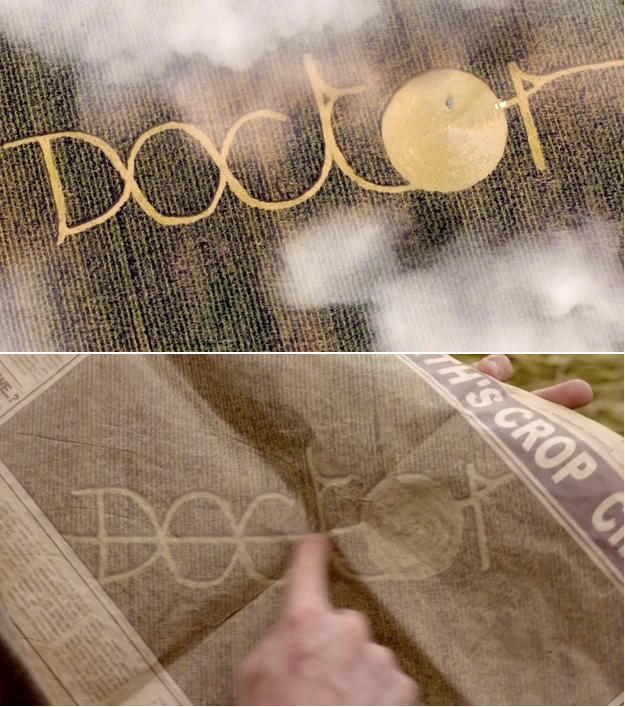 The very first scene of this episode was actually the very last one shot for the entire series – after The Wedding, in fact, because the production team needed to let the wheat grow. So I’m not surprised that the visuals and aesthetics and thematics of this scene are impeccable, helping it to function as a microcosm of the episode as a whole. Consider the fact it’s filmed out of order, and travels back to be inserted at a particular time and place, which is true for LKH, but is also true for the conceit of Melody “inserting” herself into her parents’ history, not to mention how the character of Mels is inserted into the show’s mythology itself.…
The very first scene of this episode was actually the very last one shot for the entire series – after The Wedding, in fact, because the production team needed to let the wheat grow. So I’m not surprised that the visuals and aesthetics and thematics of this scene are impeccable, helping it to function as a microcosm of the episode as a whole. Consider the fact it’s filmed out of order, and travels back to be inserted at a particular time and place, which is true for LKH, but is also true for the conceit of Melody “inserting” herself into her parents’ history, not to mention how the character of Mels is inserted into the show’s mythology itself.…
Back in August, in response to Vox Day crowing about how his Xanatos gambit had come off so perfectly or something equally stupid, I made a stab at predicting how he’d play things in 2016:
I think we can safely assume that the Rabid Puppy slate in 2016 is going to consist of five nominees in every category, to try to maximize the number of categories with no non-Puppy nominees. I suspect he’s also going to pointedly include nominees that exist to dare the left to vote against them.
Vox is, of course, nothing if not banally and irritatingly predictable, having just released the first chunk of his Rabid Puppies slate for the year, his picks for the Campbell Award for Best New Writer. And sure enough, his five picks include not only a writer whose sole publications have been through Castalia House but Andy Weir, author of The Martian, who would have been on the ballot last year were it not for the Puppies, and who I’ve had penciled in on my balloting spreadsheet since November.
First of all, then, my sincere sympathies to Andy Weir, who I’m sure had absolutely zero desire to be put on the Rabid Puppies slate, who self-evidently doesn’t and didn’t need Vox Day’s help and who really should have been allowed to enjoy his Oscar season in peace and without any of this nonsense. Now an award that he would have been up for anyway (if not ineligible on the basis of having won it last year) is fundamentally tainted. This should serve first and foremost as a reminder that Vox Day is a complete and utter dick, and that the only reason anyone would support him is that they are too.
Second of all, then, my initial thoughts on how to reply to the tactic. For one thing, I’m still going to nominate Weir. He deserves it. Frankly, his breakout success is literally the exact sort of thing the Campbell Award exists to honor. He stormed on the scene and got a Ridley Scott movie for his trouble. I’m going to carry on with my ballot in all other categories, and if Vox turns out to make some of the same picks as me, so be it. I’m perfectly at peace with that.
Because, you see, when it comes to voting?
I have a plan.…
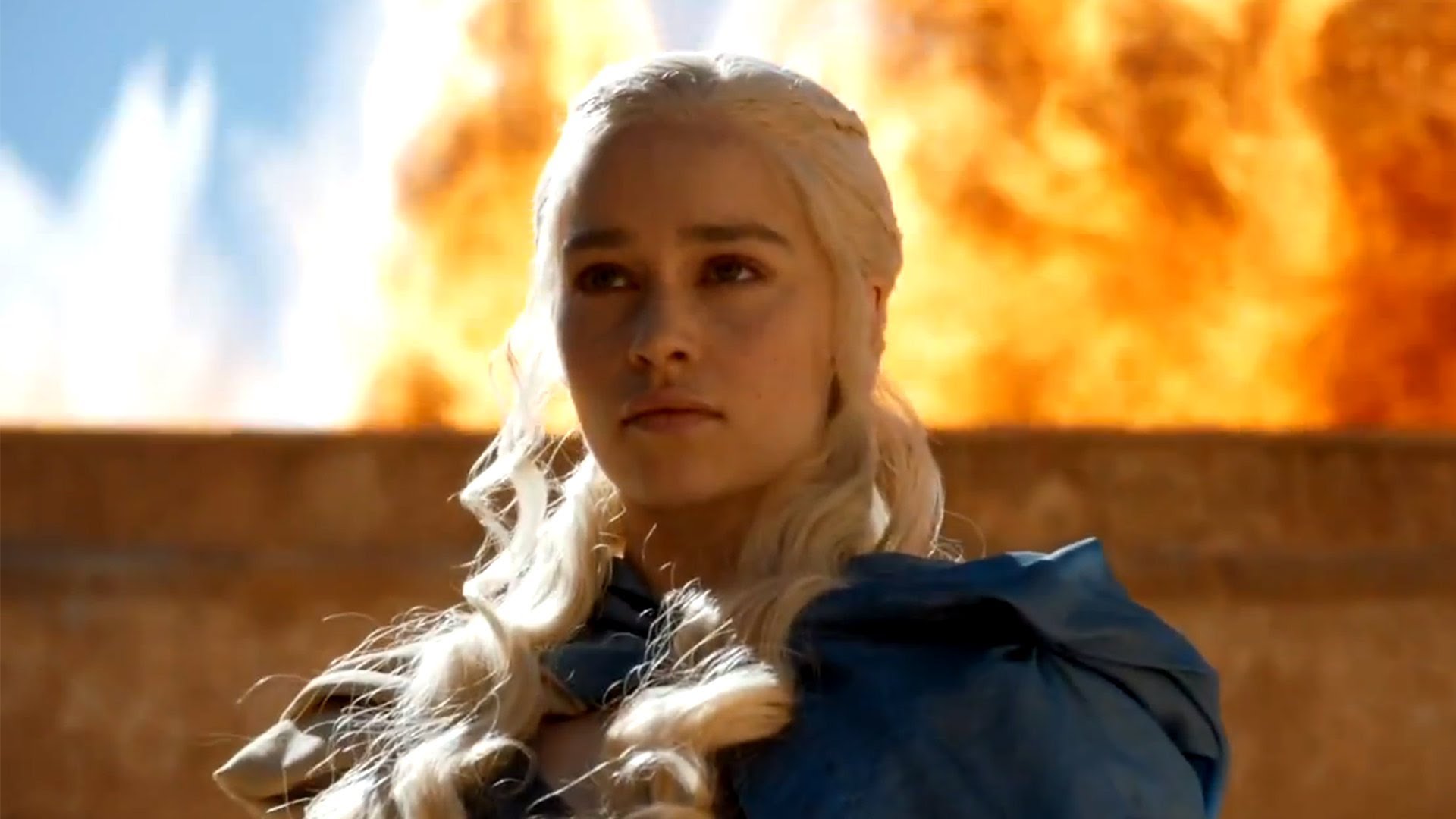 |
| Daenerys sees the tower through the trees |
State of Play
The choir goes off. The board is laid out thusly:
Lions of King’s Landing: Tyrion Lannister, Cersei Lannister, the Hand of the King Tywin Lannister
The Lion, Jaime Lannister
Dragons of Astapor: Daenerys Targaryen
Bears of Astapor: Jorah Mormont
The Direwolves: Catelyn Stark, Bran Stark
Roses of King’s Landing: Margery Tyrell
The Kraken, Theon Greyjoy
Direwolves of Winterfell: Sansa Stark
The Direwolf, Arya Stark
Archers of the Wall: Samwell Tarly
The Stag, Gendry
Stags of King’s Landing: King Joffrey Baratheon
The Dogs, Sandor Clegane
Spiders of King’s Landing: Varys
Bears of the Wall: Lord Commander Jeor Mormont
Winterfell is abandoned and in ruins. Riverrun is silent. Harrenhal is barren.
The episode is in eleven parts. The first runs three minutes and is set in the Riverlands. The opening image is of Jaime Lannister’s severed hand hanging around his neck.
The second runs four minutes and is set in King’s Landing. The transition is by family, from Jaime to Tyrion Lannister.
The third runs three minutes and is set at Craster’s Keep north of the Wall. The transition is by image, from Varys closing the crate over the sorcerer who cut him to a door closing.
The fourth runs two minutes and is set in the North. The transition is by hard cut, from Samwell turning away from Gilly to Bran running in a dream.
The fifth runs six minutes and is in two sections; it is set in King’s Landing. The first section is two minutes long; the transition is by hard cut, from Bran’s face to Varys and Rosalyn talking. The second section is four minutes long; the transition is by dialogue, from Varys speaking of prodigies in odd places and Roslyn to Margery.
The sixth part runs five minutes and is set in the North. The transition is by hard cut, from Cersei scowling to Theon and Ramsey riding through the woods.
The seventh runs two minutes and is set in the Riverlands. The transition is by allegiance, from Ramsey Snow to Locke, also serving Roose Bolton.
The eighth runs ten minutes and is in three sections; it is set in King’s Landing. The first section is three minutes long; he transition is by family, from Jaime to Cersei and Tywin Lannister. The second is four minutes long; the transition is by hard cut, from Tywin to Olenna. The third is three minutes long; the transition is by dialogue, from Varys and Olenna talking about Sansa to Sansa, and by family, from Olenna to Margery Tyrell.
The ninth part runs five minutes, and is set at Craster’s Keep north of the Wall. The transition is by hard cut, from Sansa and Margery to a funeral pyre. It features the death of Jeor Mormont, stabbed in the back by his own men.
The tenth runs five minutes and is set in the Riverlands. The transition is by hard cut, from Rast to the Brotherhood Without Banners riding.
The eleventh runs six minutes and is set in Astapor.…
Last time on Star Trek: The Next Generation…
“’Descent’ marks an important turning point in a number of respects. Up front, it’s the first time Star Trek: The Next Generation has done a cliffhanger season finale more or less only because this is the sort of thing it does to close off filming block seasons; in other words, the first time the cliffhanger finale structure is implemented as a matter of course and functional habit instead of being the result of unexpected necessity.”
“This is not the same as critiquing, say Captain Picard’s specific actions in that episode: In fact, the whole reason Alynna Nechayev is here is to further reinforce that he acted wisely and correctly-Let’s not forget that Nechayev is the first Starfleet Admiral *overtly* coded as actively evil. Her very condemnation of Picard’s choice lets us know that he made the right one. Rather, what “Descent” is attacking is the notion that moral choice was ever necessary: There is no moral dilemma in regards to the sanctity of life; it should be preserved and respected above all else no matter what, end of, and ‘I, Borg’ was stupid to insinuate that wasn’t the case and to put Captain Picard and Guinan in the position of neglecting that.”
“Because what the Borg have done here in ‘Descent’ is, terrifyingly, assimilate the very concepts of individual positionality and human empathy themselves. They’ve taken two of the most sacred tenets by which Star Trek operates, ground them into the engines of capitalism and turned them back against us in an attempt to quell any resistance we could offer before we reached a point where we were prepared to effect change.
The Borg’s endgame is, and always has been, to kill off Star Trek as Star Trek: The Next Generation before it transitions to the form that will do battle with them on their own terms. And even if they were to fail here, they’d still be ready for us in the future. Either way, they win.”“And who better to mastermind it all than a psychopathic fascist android?”
And now, the conclusion…
It’s hard not to go into “Descent, Part II” without acknowledging that this is the beginning of the end for Star Trek: The Next Generation‘s televisual voyage. The news had broken over the summer, so there’s no point in pretending the shadow of cancellation wasn’t looming long over the seventh season. Let’s clarify a few facts first and foremost then: Yes, Star Trek: The Next Generation was prematurely canceled. Yes, it was canceled because Paramount wanted to launch a film series with the Next Generation cast. Production costs had gone up and, with the show as popular as it had ever been, they thought it would be more profitable to start a new film series than to continue the TV one. They were wrong.…
Edit to add: I forgot the category in which fans of this blog could plausibly put someone on the ballot – James Taylor, cover artist for all Eruditorum Press books, is eligible for Best Fan Artist, a category that required just 23 nominations to get on the ballot last year.
Hugo nominations have officially opened. If you were registered for Sasquan, you are automatically eligible to nominate (though you’ll have to join MidAmericon II to vote); otherwise you’ll have to register for MidAmericon II. If you’re eligible, you should have an e-mail coming in the next few days with details on how to nominate.
I’m working on my nomination ballot, and will post it when it’s ready in the course of a “everybody post your ballot in comments” post. It remains my view that everyone should make their ballots public this year, just because that’s a sound anti-Puppy tactic.
Anyway, if you want to nominate anything we do over here for some bizarre reason, here’s a rough guide to it.
Eruditorum Press as a whole is not eligible; it does not meet the criteria for Best Semiprozine or Best Fanzine. TARDIS Eruditorum Volume 6 is also probably not eligible; it would depend on whether it’s considered to be “substantially revised” from its original electronic publication, and the precedent set by booting “Yes Virginia, There Is a Santa Claus” last year makes me suspect it’s not.
Now go nominate something with an actual shot at getting on the ballot.…
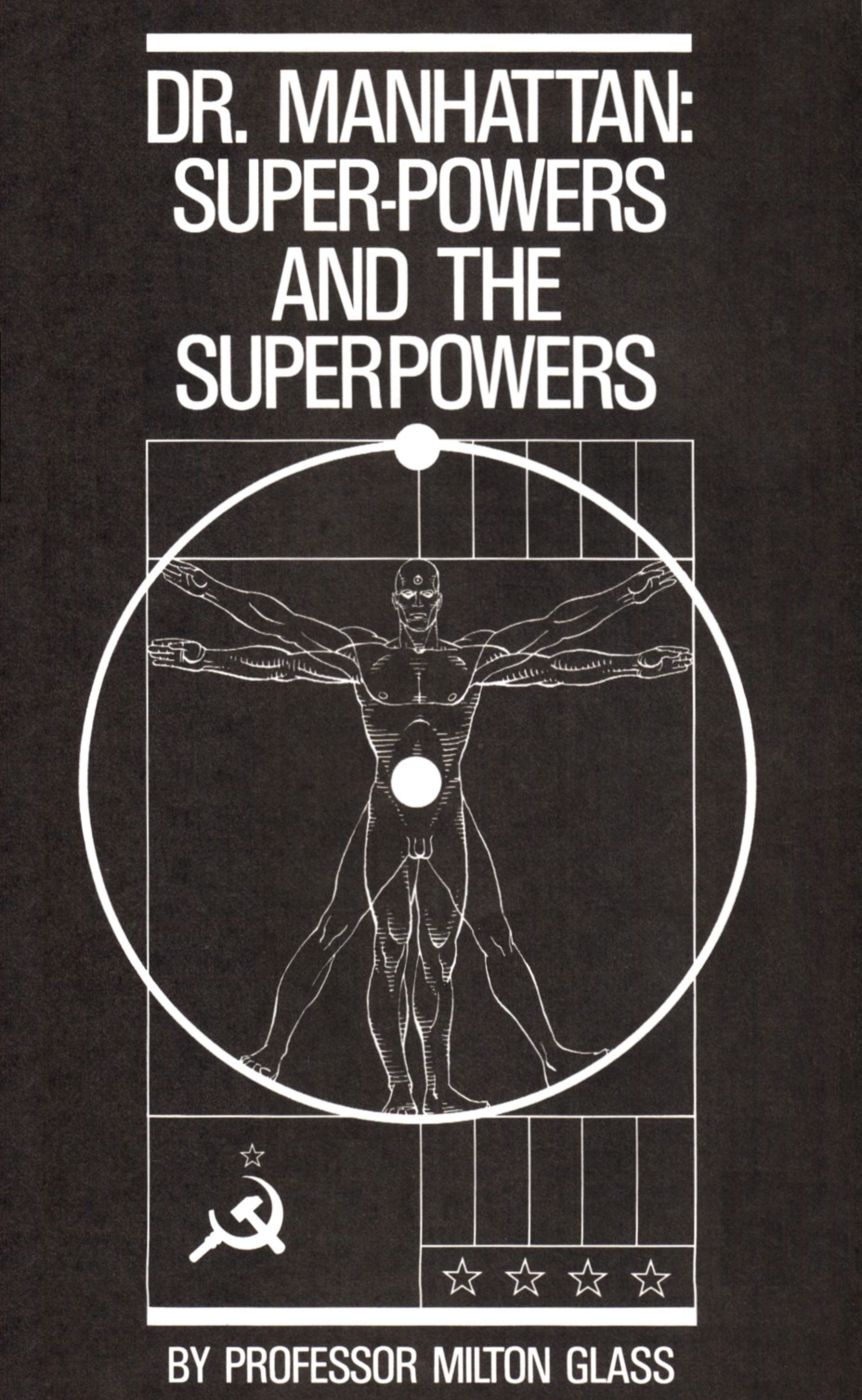 {Impressively, Alan Moore’s second publisher for Marvelman/Miracleman was an even bigger trainwreck than his first. It is perhaps unsurprising, given this, to find out that Dez Skinn negotiated the bulk of the deal. The financial plan for Warrior had always involved selling the strips to foreign markets, and Skinn was determined to sell them as a package, reasoning that “strips like Spiral Path – which I put into an anthology alongside Shandor and Bojeffries Saga – were not the stars of the show,” but that Warrior would never have happened without them and that they deserved the same shot at foreign publication as the heavy-hitters like V for Vendetta and Laser Eraser and Pressbutton. But ironically, it wasn’t the lesser Warrior material that made selling the strips abroad a challenge, but the nominal crown jewel, Marvelman, as neither of the two biggest comics publishers would touch it. DC was the obvious first choice, since they were already having considerable success publishing Alan Moore in the US market, and were indeed interested, but Dick Giordano pointed out that there was simply no way that they could publish a comic called Marvelman, citing the number of problems they were already having with Captain Marvel, which they’d bought from the smoldering ruins of Fawcett and started publishing under the name Shazam! But the obvious second choice proved no better; Marvel wouldn’t touch it either, pointing out that if they were to publish a strip called Marvelman it would be read as representing the entire company, which was perhaps not quite what they wanted Moore’s psychologically damaged take on superheroes to do.
{Impressively, Alan Moore’s second publisher for Marvelman/Miracleman was an even bigger trainwreck than his first. It is perhaps unsurprising, given this, to find out that Dez Skinn negotiated the bulk of the deal. The financial plan for Warrior had always involved selling the strips to foreign markets, and Skinn was determined to sell them as a package, reasoning that “strips like Spiral Path – which I put into an anthology alongside Shandor and Bojeffries Saga – were not the stars of the show,” but that Warrior would never have happened without them and that they deserved the same shot at foreign publication as the heavy-hitters like V for Vendetta and Laser Eraser and Pressbutton. But ironically, it wasn’t the lesser Warrior material that made selling the strips abroad a challenge, but the nominal crown jewel, Marvelman, as neither of the two biggest comics publishers would touch it. DC was the obvious first choice, since they were already having considerable success publishing Alan Moore in the US market, and were indeed interested, but Dick Giordano pointed out that there was simply no way that they could publish a comic called Marvelman, citing the number of problems they were already having with Captain Marvel, which they’d bought from the smoldering ruins of Fawcett and started publishing under the name Shazam! But the obvious second choice proved no better; Marvel wouldn’t touch it either, pointing out that if they were to publish a strip called Marvelman it would be read as representing the entire company, which was perhaps not quite what they wanted Moore’s psychologically damaged take on superheroes to do.
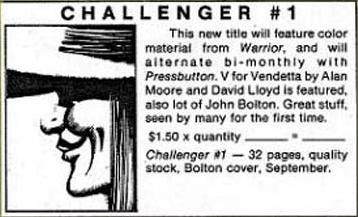 |
| Figure 920: An advertisement for the never-published Challenger #1 from Pacific Comics. |
That left smaller companies. Initially the plan was a company called Pacific Comics, but after contracts were signed and the first issue of Challenger, headlined by V for Vendetta, advertised Pacific abruptly went belly up in August of 1984, leaving all of the Warrior properties homeless once again. Ultimately they were acquired, alongside some other remnants of Pacific, by Eclipse Comics, created by siblings Jan and Dean Mullaney, but edited by cat yronwode (lack of capitalization per her wishes), a small publisher originally out of New York, but by this point run out of Guerneville California. But there were still other problems. Not only was Marvel uninterested in publishing Marvelman, they were uninterested in the idea of anyone else publishing him. This started with Marvel UK’s dispute with Skinn over the latter’s decision to break the informal truce they had by actually publishing a comic called Marvelman on the cover instead of featuring him inside Warrior, but rapidly spread to the US branch of the company.
In Moore’s telling, the figure at the heart of the dispute was Jim Shooter, who he characterizes as “one of these comic book industry führers,” which doesn’t actually rate very highly in the list of awful things Jim Shooter has been called by his fellow professionals.…